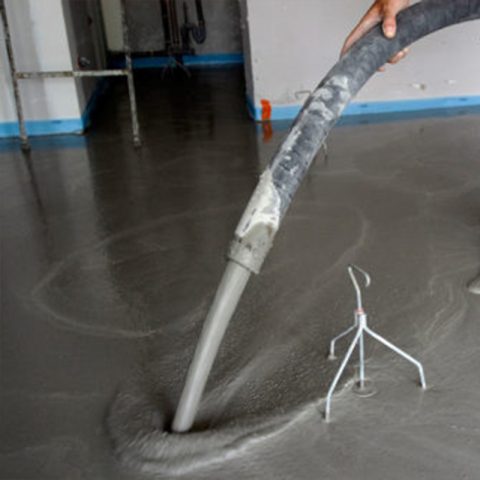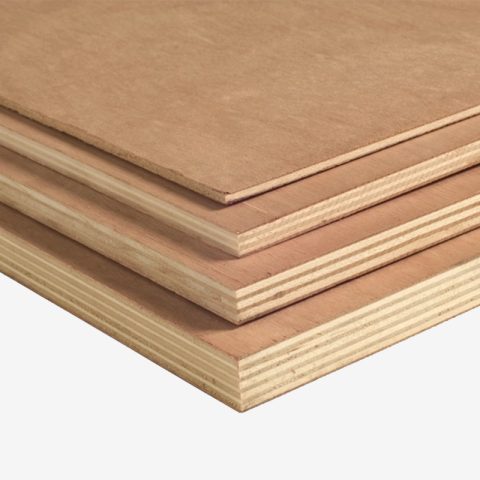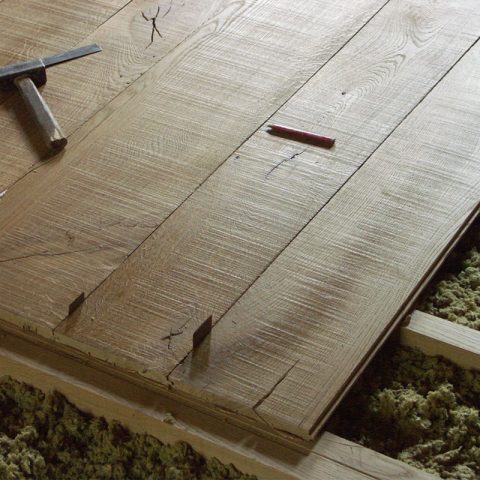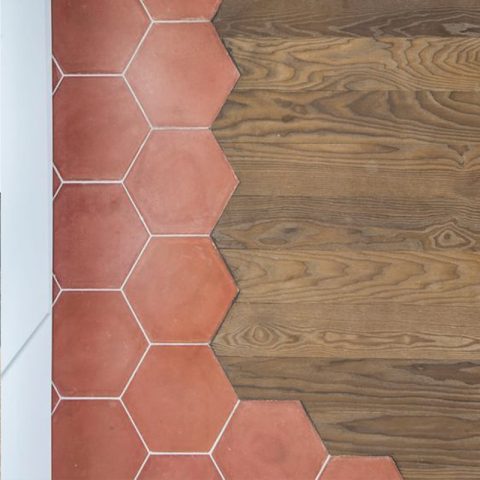How can you ensure a smooth transition between a wood and terracotta floor ?
The question here is to know how to ensure a smooth transition between a wooden floor (such as parquet) and a terracotta tile.
Consider the difference in thickness (and room levels)
The key point here is an evaluation of your project’s finished levels, because unless there is a step up or down you will want the upper surface of adjacent floor types at the same level. This is equally true for an interior doorway between one room and the next, or for an open plan interior passing from one zone to another.
Typically antique reclaimed terracotta tiles are +/- 3cm thick (just over 1 inch). That is thicker than most wood flooring, although some of our reclaimed wood flooring can be that thick. More typically wood floors are 20mm thick or less.
This means you should look at building up the level before laying your chosen wood flooring. This can be done using various methods:

Self-leveling screed (if concrete slab)

Sheet of plywood or other agglomerate sheeting

Laying battens (traditional way)
Try to get that aspect sorted very early on in the project design process, because countless clients over the years have had to abandon their desire for antique reclaimed tiled floors because they or their architect-designer hadn’t anticipated thicker than usual floor tiles when specifying the heights of sub-floors.
Connecting Different Flooring Surfaces
To add more style to your interior decor, you can consider using multiple types of flooring within the same room. Mixing flooring also allows you to define spaces without the need for physical partitions. For instance, you might choose antique parquet in combination with hexagonal antique terracotta tiles. You might be wondering how to seamlessly connect a wooden parquet floor with hexagonal terracotta tiles.
Mixing Parquet and Hexagonal Tiles
To infuse a touch of originality into your space, consider allowing the hexagonal tiles to intermingle with the parquet, creating a visually captivating effect. Instead of aiming for rigid symmetry, embrace randomness and unpredictability for an optimal aesthetic result.
Parquet and Hexagonal Tiles
Opt for hexagonal tiles to achieve a harmonious blend of tradition and modernity. In this approach, let the hexagonal tiles extend onto the parquet, adding an artistic dimension to the overall design. Precision in cutting the wood is crucial, following the precise contours of the tiles for a perfect arrangement.
Assembly Tip
During meticulous assembly, ensure that the wood cutting accurately mirrors the shape of the hexagonal tiles. This attention to detail will guarantee a seamless and aesthetic integration between the parquet and the tiles. If you choose to use grout, opt for a thin and discreet joint, allowing for a subtle transition between the wood and the tiles. The goal is to achieve a visual balance where the parquet and hexagonal tiles coexist smoothly, emphasizing the unique aesthetics of this bold combination.

HAVE A PROJECT IN MIND?
